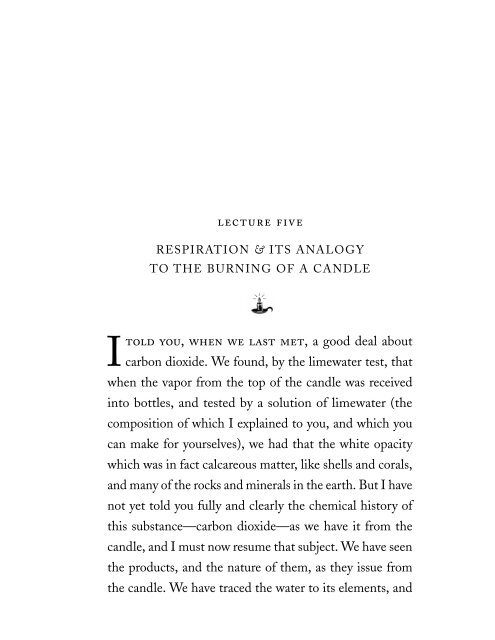Michael Faraday's The Chemical History of a Candle
Michael Faraday's The Chemical History of a Candle With Guides to Lectures, Teaching Guides & Student Activities by Bill Hammack & Dos DeCoste
Michael Faraday's The Chemical History of a Candle With Guides to Lectures, Teaching Guides & Student Activities by Bill Hammack & Dos DeCoste
You also want an ePaper? Increase the reach of your titles
YUMPU automatically turns print PDFs into web optimized ePapers that Google loves.
Lecture Five<br />
RESPIRATION & ITS ANALOGY<br />
TO THE BURNING OF A CANDLE<br />
I<br />
told you, when we last met, a good deal about<br />
carbon dioxide. We found, by the limewater test, that<br />
when the vapor from the top <strong>of</strong> the candle was received<br />
into bottles, and tested by a solution <strong>of</strong> limewater (the<br />
composition <strong>of</strong> which I explained to you, and which you<br />
can make for yourselves), we had that the white opacity<br />
which was in fact calcareous matter, like shells and corals,<br />
and many <strong>of</strong> the rocks and minerals in the earth. But I have<br />
not yet told you fully and clearly the chemical history <strong>of</strong><br />
this substance—carbon dioxide—as we have it from the<br />
candle, and I must now resume that subject. We have seen<br />
the products, and the nature <strong>of</strong> them, as they issue from<br />
the candle. We have traced the water to its elements, and


